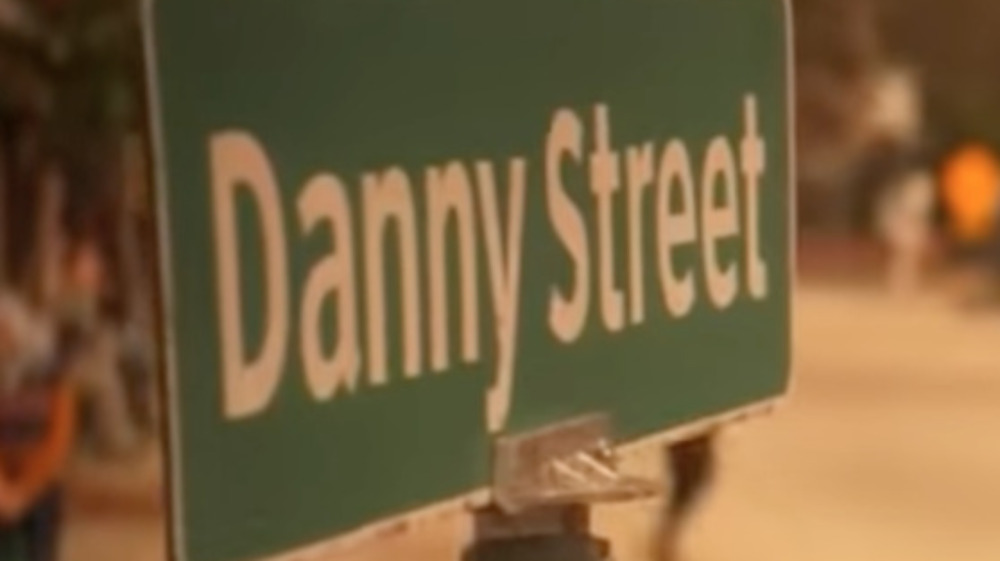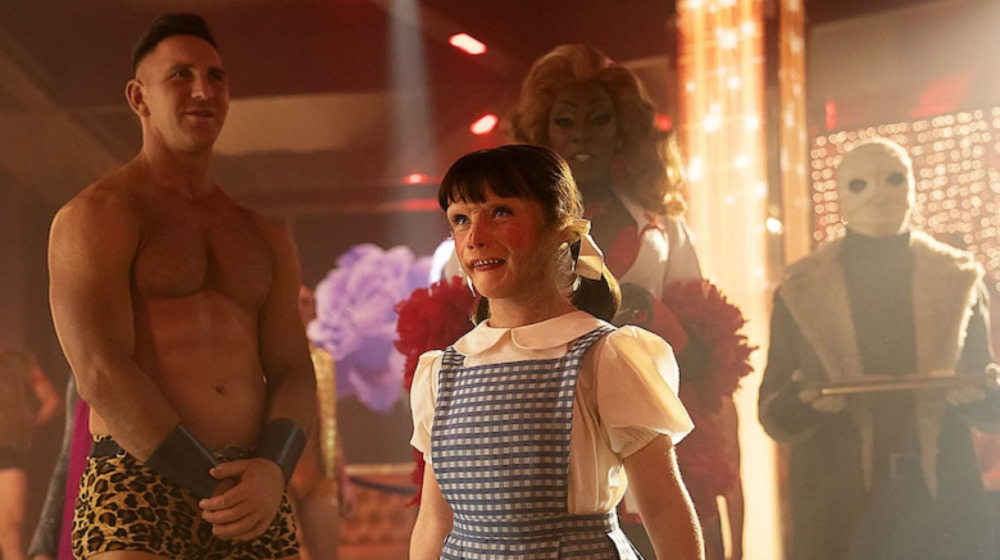Doom Patrol's Danny The Street Explained
The first two seasons of Doom Patrol have been filled with an array of wonderful, horrifying, and downright absurd characters, but there's none more unique than Danny the Street. Created by Grant Morrison, Richard Case, and Brendan McCarthy in their Doom Patrol comics in the 1990s, Danny is a gender-queer sentient street who uses they/them pronouns. They features prominently in the first season of Doom Patrol, when the Bureau of Normalcy hunts them since they're seen as an aberration.
Danny is introduced in the "Danny Patrol" episode of season 1, seeking help from Dr. Niles Caulder (Timothy Dalton), whom they'd worked with before in hiding Dorothy Spinner (Abigail Shapiro) from the world. Danny the Street has a number of fantastical abilities, like being able to transport themselves to any location in the world, seamlessly blending in with the rest of their surroundings. Most importantly, Danny has become a haven for lost souls who feel like outcasts from the rest of the world — something which Larry Trainor, aka Negative Man (Matt Bomer), quickly relates to after struggling with his sexual identity most of his life. These people are known as "Dannyzens," and they help make Danny the Street expand their reach.
Given how violent and strange Doom Patrol is at times, Danny the Street is one of the most wholesome elements of the series because they're accepting of everyone no matter their race, sexuality, or identity. But they're also a key part of the main storyline involving Niles and his daughter Dorothy.
Danny the Street hid Dorothy for decades
In Doom Patrol season 2, the audience is shown Niles discovering his daughter in 1927, when she was forced to perform in a circus. The scientist approaches Danny (at the time an alleyway in London) for their help in hiding Dorothy from the world. It seems a little cold for Niles to keep Dorothy under lock and key, but he does it so he can continue searching for a way to become immortal in order to keep an apocalyptic entity known as the Candlemaker at bay.
Danny is very aware that hiding Dorothy is for the best, but also that it's causing severe emotional damage to the young girl, who's extremely lonely without her father. Although Danny can communicate by creating words out of decorations or lights, that type of company isn't the same as Dorothy having her father by her side. She later reunites with Niles in the season 1 finale, "Ezekiel Patrol," which sees Danny reduced to a singular brick.
However, because the Dannyzens are the ones who can help Danny grow to larger sizes, they're later restored back into Danny the Tire with the help of Flex Mentallo's (Devan Long) reality-altering powers. Mentallo is another creation by writer Grant Morrison and also appears in the first season, so it's quite clear which era of the Doom Patrol comics the series' writers have been influenced by. Since the comics find Danny becoming a sentient ambulance (which the Dannyzens used to travel the world to help lost souls), it wouldn't be surprising if Danny the Tire evolves even further in Doom Patrol season 3 and beyond.

